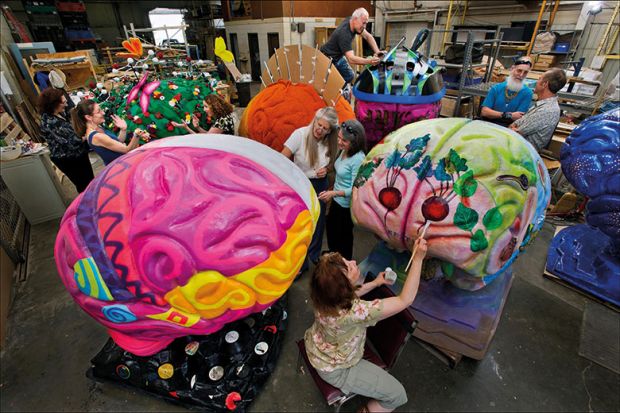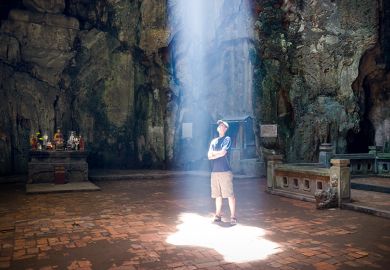There may still be some universities where the philosophy of mind is taught without reference to the brain and body processes that underpin human consciousness, but, at least in the anglophone world, they are a diminishing band. Over the past decades, a remarkable convergence has brought together cognitive psychologists, neuroscientists, evolutionary biologists and philosophers within the burgeoning field of consciousness studies, with its own journals, conferences, norms and conflicts.
Consciousness is a Humpty-Dumpty term, with a multitude of rich meanings. For most of these researchers, it maps roughly on to what used to be called the mind-body problem – or, to put it more crudely, being awake and aware rather than asleep. Many traditional philosophical concerns – for example, the difference between objective third-person accounts, the subjectivity of personal experience and of “qualia” such as seeing the colour red or being in love – are being swept aside as non- or wrongly posed questions. Some argue that consciousness is an epiphenomenon, a “user illusion”, a spin-off from the complexity of the human brain, “the whistle on a steam train” while all the real work is being done by the brain’s machinery. Others claim that it is a real property of appropriately organised matter, with functional benefits to the organisms – specifically humans – that possess it. Either way, it is a phenomenon to be investigated by neuroscientists through such techniques as functional magnetic resonance and magnetoencephalographic imaging of the brain processes activated during conscious thought, and by evolutionary biologists seeking signs of consciousness in other species.
Simona Ginsburg and Eva Jablonka, a neuroscientist and an evolutionary biologist, are firmly of the view that the past is key to the present; not merely that consciousness is an evolved property but that understanding how and why conscious organisms evolved is the key to understanding our own human consciousness. Their book, more than a decade in the making, is an attempt to answer these how and why questions. But before they get to offering their answers, which occupy only the second half of this substantial work, they take us on a wide sweep through the history of Western thought on the nature of mind and consciousness from Aristotle onwards, focusing especially on Jean-Baptiste Lamarck, Charles Darwin and William James, before turning to the experimental and theoretical approaches of the past half-century.
The authors contrast the reductionist stance of neuroscientists who seek to decompose consciousness into simpler components – awareness, visual perception – located in specific sites or neuronal ensembles within the brain with those who see it as an emergent higher-level property of the entire brain. They favour the latter, dismissing the fantasy of a conscious brain in a vat isolated from the rest of the body and its interactions with the social and physical environment. The brain is embodied; brain and body are embedded in a world of rich experience. Consciousness develops through the growing infant’s responses to, and her own actions upon, the world that surrounds her. A newborn, Ginsburg and Jablonka suggest, may not even be conscious until she embarks upon this experiential journey.
Their evolutionary perspective follows in the footsteps of others, notably the neurologist Antonio Damasio and the psychiatrist Todd Feinberg. They see “minimal consciousness” emerging during the great Cambrian evolutionary explosion some 540 million years ago when animals with not just nervous systems but also primitive brains appear in the fossil record. Animals alive before the Cambrian were herbivores, content to graze on the vegetation that covered the shallow seabeds. With the Cambrian arrived predators equipped with the weaponry to catch and eat the herbivores. An evolutionary arms race ensued in which herbivores developed strategies to protect themselves from being eaten and predators honed their hunting. These counter-strategies required both groups to acquire new skills. To survive in this new competitive environment they had to be able to learn from experience and remember. These needs in turn drove the increasing size and complexity of their brains.
While Damasio sees the animal’s recognition of self – that it is a bounded organism separated from the not-self of the surrounding environment – as the key step to minimal consciousness, it is capacity to learn and remember, and the necessary neural mechanisms, that is central to Ginsburg and Jablonka’s thinking. First comes simple associative learning, that X is edible but that Y will fight back if you try to eat it. Then comes what they call Unlimited Associative Learning (UAL), by which not just simple associations but compound patterns – X in context A but not in context B – can be remembered. Such learning and remembering is coded by building specific patterns of connections (synapses) between nerve cells in the brain. This is a process currently being intensively researched by neuroscientists, and the authors spend some time summarising these primarily biochemical findings.
With UAL, the authors argue, minimal consciousness arrives. It is this minimal consciousness that is the clue to the book’s title, which comes from Aristotle. The “sensitive soul” is the term he uses to describe the ability of animals to subjectively experience percepts and feelings. Humans, by contrast, are endowed with a rational soul, a richer consciousness, enabling abstract thinking, logic and symbolic language. For Ginsburg and Jablonka, then, as for Damasio and before them Aristotle, “feelings” – affect – come before cognition, and Descartes’ error was to claim cogito rather than sentio ergo sum. Modest in their aims, minimal/sensitive is as far as the authors are prepared to go. Accounting for the further evolution and emergence of rational souls must await a later book.
Yet, in other ways, they go much further. Jablonka’s previous books have been at the leading edge of the current move beyond the narrowly gene-centred neo-Darwinian view of evolution towards what has been called the extended evolutionary synthesis, in which the effects of an organism’s own actions and experience during development can be transmitted to succeeding generations, and hence drive evolutionary change. In the current book, the emphasis is on epigenetic marking, a process whereby an organism’s interaction with the environment during development results in the placing of molecular marks in the DNA sequence of the genome and hence heritably modifies gene expression. Ginsburg and Jablonka describe this as epigenetic memory, which carries forward to the next generation, by contrast with synaptic memory, which persists only for the lifetime of the organism.
If this sounds like a version of the mechanism of evolution – “the inheritance of acquired characteristics” – put forward by Lamarck half a century prior to Darwin, and derided as an ultimate heresy by geneticists and Darwinians ever since, then that is exactly what it is. Jablonka has been one of the strong voices in the move to rehabilitate Lamarck’s reputation, and here his shadow can be sensed falling across the authors’ shoulders. But neo-Lamarckism is as different from its original as neo-Darwinism is from On the Origin of Species, and it is time to welcome the new synthesis rather than retreat into old trench warfare.
My shelves are groaning under the weight of books published in the past couple of decades offering scientific solutions to the “problem” of consciousness. The Evolution of the Sensitive Soul, despite its rather whimsical illustrations, surpasses them all, a tour de force in both its range and achievement. If you read only one book on the current debates, and can hum your way through the complex evolutionary story, this is it.
Steven Rose is emeritus professor of neuroscience at The Open University.
The Evolution of the Sensitive Soul: Learning and the Origins of Consciousness
By Simona Ginsburg and Eva Jablonka
MIT Press, 664pp, £40.00
ISBN 9780262039307
Published 12 March 2019
The authors
Simona Ginsburg was born in New York in 1947 but moved to Israel in 1948. Her father was an organic chemist, and it was his description of the landmark Miller-Urey experiment – showing how organic molecules are formed from inorganic matter – that spurred her to study chemistry at the Technion in Haifa.
During her study, however, Ginsburg realised that “biology, and especially the brain, interested me more than chemistry”. As neurobiology was then in its infancy in Israel, she went to the University of Oxford for her DPhil, spent several years there and became “infected” by an interest in philosophy. After returning home in 1975, she worked at the Open University of Israel until retirement in 2014.
Eva Jablonka was born in Poland but emigrated to Israel at the age of five. She studied biology at Tel Aviv University, at what is now Birkbeck, University of London and at Ben-Gurion University of the Negev before going on to a PhD in genetics at the Hebrew University. Now a professor in the Cohn Institute at Tel Aviv University, she has worked on epigenetics, learning, animal traditions and symbolic language, stressing that an “evolutionary perspective” is “central to everything I do”.
Much of Ginsburg’s research, done at the Hadassah Hebrew University Medical School in Jerusalem, has been on ion channels at the neuromuscular synapse. Yet towards the turn of the millennium, she recalls, “philosophy started tickling me once more”. This led her to develop an MA in biological thought, including a course on the mind-body problem, and it occurred to her that “an integration among neurobiology, philosophy of biology and evolution might best illuminate the problem, and I tried to interest my friend Eva to work together on the question of how consciousness first emerged. It took two years and many dinners to convince her, and when we finally started working together, in 2004, we had no idea what was in store…”
Matthew Reisz
POSTSCRIPT:
Print headline: Feelings lead to understanding
Register to continue
Why register?
- Registration is free and only takes a moment
- Once registered, you can read 3 articles a month
- Sign up for our newsletter
Subscribe
Or subscribe for unlimited access to:
- Unlimited access to news, views, insights & reviews
- Digital editions
- Digital access to THE’s university and college rankings analysis
Already registered or a current subscriber?







